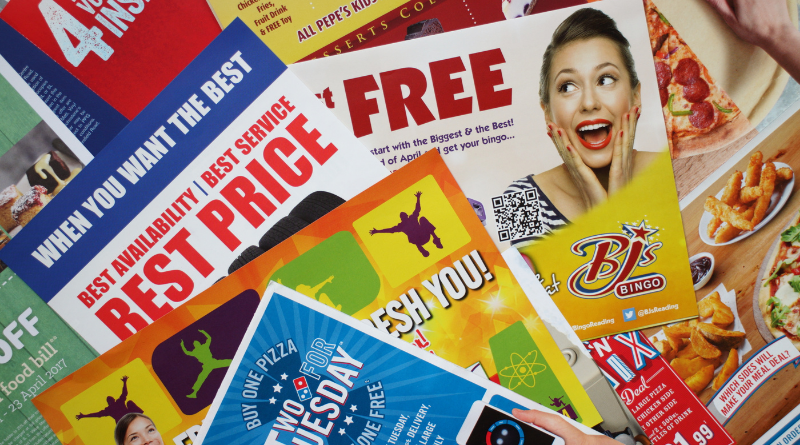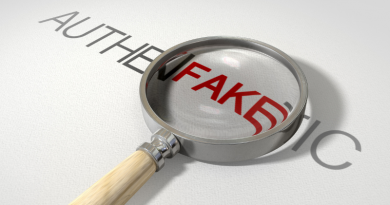The new era of flyers in an online world
Printed flyers can get a bad rep. They are relentlessly shoved in your letter box, shouting about all sorts of products or services you just don’t need.
Or those flyers shoved in your hand at a networking event, that you politely accept, only to file it away or recycle.
When flyers are done badly… poor design and cheap printing and paper, they are a waste of time and money.
However, I don’t believe that flyers are completely over and done with.
Even in this increasingly online world we live in, there’s still a time and a place for the humble flyer to have its moment and can really shine.
Here are a few ways to use flyers
- If you are planning to have your flyers mass delivered to people’s homes, expect a low percentage of that converting into clients. This type of marketing is referred to as ‘Door Drops’, where there is no address. It’s hard to pre-qualify or target your ideal client. This traditional leaflet drop is suitable for certain types of businesses. If you offer services that relate to home improvement, maintenance etc, people might hold on to it for reference. Like most advertising, you could repeat this exercise every few months to get a better chance of someone taking notice and converting to a sale. It’s all about timing. From when they need your service and when they last saw your flyer.
- If you have the addresses for your clients (in a secure GDPR compliant way of course), you could create a campaign to send out flyers to existing and past clients to remind them you exist. For best results, send out your flyer in a named and addressed envelope.
- You could include a flyer as part of a welcome pack that you send out when you have a new client. This gives you the opportunity to upsell or let them know about other products or services you offer that they may not know about.
- Having a pile of flyers to hand out at exhibitions are a good way to explain your services and connect with attendees.
- You could use flyers instead of or in addition to handing out business cards. There’s a lot more room for information and imagery on a flyer. Although in networking, many people liked to store their cards in specific holders and Rolodexes. Time will tell if people will be handing out business cards again at in person events.
- And finally, you could display your flyers in high footfall areas like receptions. For example, doctors, gyms, spas, offices and so on. Make sure that if you do this, your ideal client is likely to pass by and that your service is relevant.
Figures for flyer marketing
(Source: dma.org.uk/article/2018-direct-mail-facts-figures)
- 60.5% of door dropped flyers are read/looked/glanced at it
- 85% threw it away/recycled the door dropped flyers.
- 16% put the door dropped flyers aside to look at later.
- The average frequency for door drops is 3.
- 57% opened addressed mail when it just arrived and 20.8% opened it within a twenty-eight day period.
- 48.5% read/looked/glanced at addressed mail and 23% within a twenty-eight day period
- 26% threw addressed mail away/recycled
Practical points to consider
- Is the address you have for your client up to date? If you sent your flyer to them, would they even receive it? Many people are working from home these days and only drop by their registered address on a rare occasion.
- Decide if you want the content to be evergreen. This means there are no dates or prices listed on it that need to be updated. This is important if you are getting a very large quantity of flyers printed in one go.
- Alternatively, you may wish to publicise a new opening, launch a new product or service, or limited time special offer. These are great reasons to get back in touch with old customers and reach out to attract new ones.
- Buying print in bulk reduces the cost per item. It may seem like a good deal, but try to work out how many you actually need, with a bit spare just in case. Ordering the ‘right’ amount will reduce waste.
- Know who your audience is. This will have an impact on the design style, colours, imagery, and the message etc. Always have your target audience in mind when making any marketing decisions.
- Measure your results. What sort of return or outcome do you want as a result of using these flyers? You can track even large campaigns by including QR codes, specific URLs and leaflet codes, which can all be tracked.
Virtual flyers
It’s worth having a digital version of your flyer to hand, even if you are printing them. The virtual files can be saved as PDF, PNG or JPG, and are the best file types to be opened on various devices and commonly used.
The PDF supports clickable links to website addresses and emails. You can also have multiple pages, suitable for a double sided or folded flyer.
PNG and JPGs are flattened images and you would have 2 or more files to send out if it’s a double sided flyer.
Digital versions of your flyer can be emailed, text message and chat messages as an attachment. PNGs and JPGs can be embedded / inserted into the text portion of the email, depending on the email provider.
You can also upload files to the chat in Zoom networking meetings. It’s a more memorable way of sharing your information. Just make sure to name the file something obvious that includes your company name or your name and the word ‘flyer’.
Designing flyers
You can easily create your own flyer using design templates in programmes like Canva. Make sure to include extra ‘bleed’ round the edge of your design and select the correct file format for download for print.
If you have a bit of a budget or no interest in the DIY approach, use a trained designer. Before making a decision, take a look at their portfolio and get recommendations to pick the right person for you.
Local printers often offer some basic design services and can knock up a flyer for you. Again, ask for examples of their past work and shop around.
Printing flyers
You can use a local printer, go with a recommendation, or use an online provider. We have all heard and used Vista Print at one time or another. I feel like they are the Ryan Air of the print world. They seem like a really good deal, but the quality is not that great and once you update the settings, not as cheap as it first seemed.
As a small business or individual, I suggest asking around for recommendations and getting some print quotes for your chosen quantity.
Final thoughts
Ask yourself, do you really need these flyers? Don’t create them ‘just because’.
Take some time to plan and brainstorm first. What are you communicating, who is it aimed at and what action do you want them to take?
For best results, the flyer campaign should build upon your other marketing activities and reinforce your brand message. This means that elements of your flyer should be repurposed and repeated on social media posts. You could write a blog post on the topic or add a new page on your website.
You are investing your time and money, make sure it’s done well.
Originally posted 2021-05-28 13:01:35.
- How do you represent your brand? - January 10, 2026
- The new era of flyers in an online world - November 18, 2025
- Is having a vision or mission important for a small business? - October 27, 2025






